Obtén una mejor calidad de vida, un negocio más sostenible y una mejor salud para las vacas estableciendo una asociación de tipo win-win con tu veterinario y consigue prevenir los casos de mastitis aplicando una terapia contra la mastitis basada en la evidencia.

![]() 10 Days to master milk management
10 Days to master milk management
Nuevo diagrama:
¿Leche anormal? Descárgate el diagrama para aprenderlo todo sobre los síntomas de la mastitis bovina, el tiempo de espera y las recomendaciones de tratamiento.
¿Leche anormal? Descárgate el diagrama para aprenderlo todo sobre los síntomas de la mastitis bovina, el tiempo de espera y las recomendaciones de tratamiento.

Establece una asociación de tipo
win-win con tu veterinario
Establecer una asociación con tu veterinario es fundamental para la rentabilidad de tu negocio, así como para el bienestar de tus vacas. Solo se conseguirá obtener la máxima rentabilidad cuando ambas partes trabajen en equipo.
Lee más sobre cómo maximizar la producción de leche y la rentabilidad
Publicaciones más populares
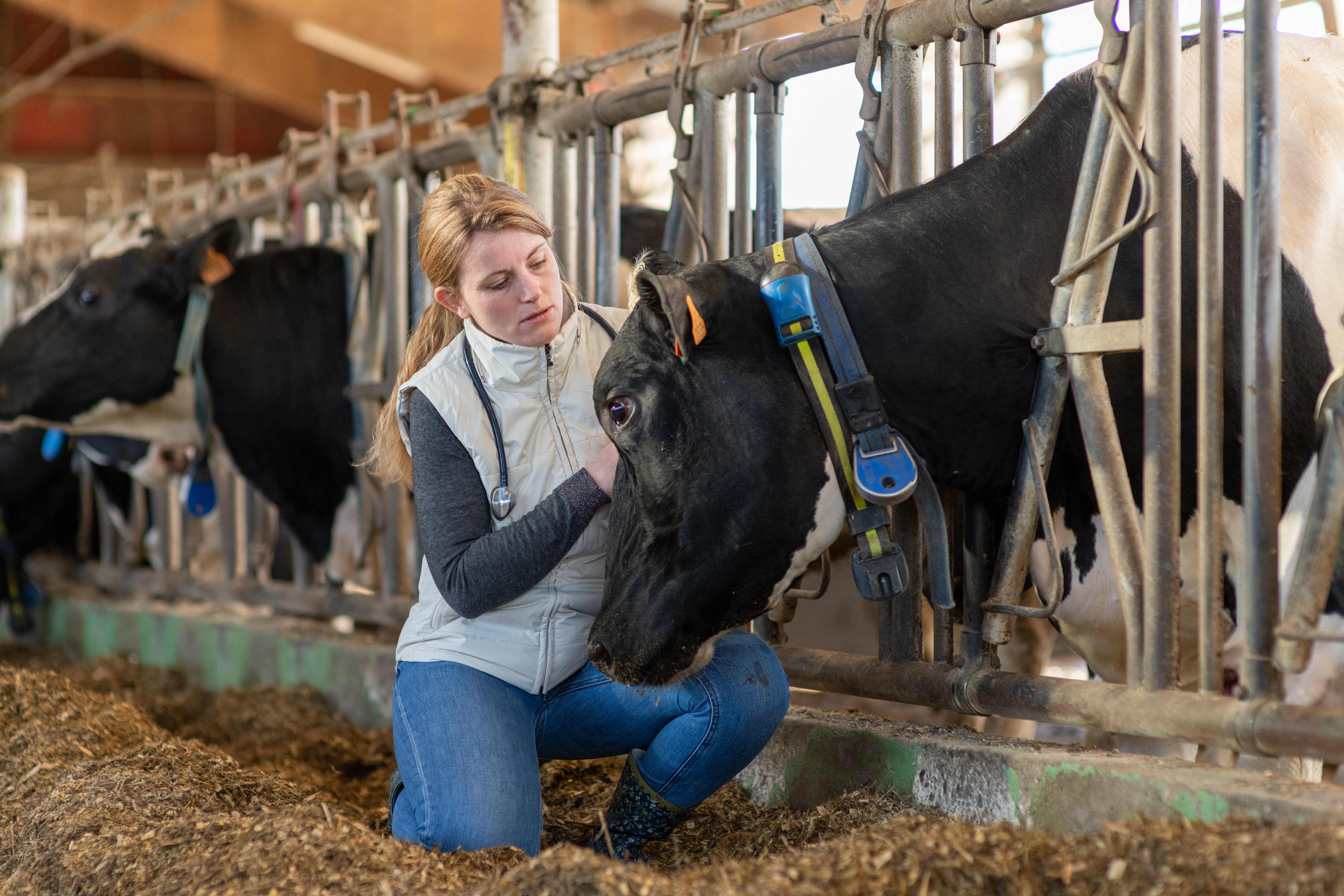
El plan de cinco pasos para el control de la mastitis
Este plan de cinco pasos sirve como guía para establecer un enfoque a fin de abordar la mastitis de una forma metódica. Se trata de
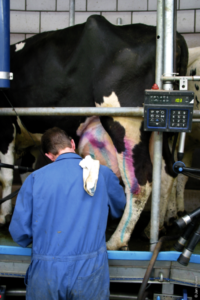
Cinco cosas que el ganadero debería saber sobre la mastitis
Este es el primero de una serie de artículos sobre la salud de las ubres. Este número servirá como presentación de la serie, mientras que
Testimonios
Servicios rutinarios de salud de la ubre con el veterinario
Tenemos visitas rutinarias al veterinario cada dos semanas, principalmente para la fertilidad y las vacas frescas, tenemos rutina de recorte de pies cada 3 meses de nuevo principalmente medidas preventivas.
Ganadero, 110 vacas lecheras
El papel del veterinario en la gestión de las explotaciones
Comienza con una pregunta de un agricultor. Si eso no está ahí… no tienes ningún papel.

Gestión y productos preventivos
Benefíciate de una gestión optimizada de la mastitis gracias a los métodos preventivos, que permiten evitar nuevas contaminaciones y un mayor estrés.
Featured Webinar
Achieve more from your prescribing visit
Join experts like Sofie Piepers and Joep Driessen for a dynamic virtual webinar to discover mire about the bacteriological and practical approach for a better udder health management.

Lee más sobre la prevención y el control de la mastitis
Publicaciones más populares
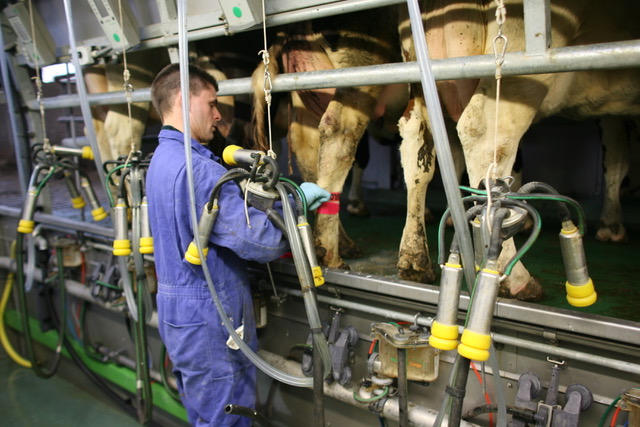
Qué hacer cuando el ordeño se complica
En nuestro anterior artículo del blog Los tres pilares para un ordeño adecuado hablábamos sobre el correcto proceso de ordeño. Pero, ¿cómo debemos actuar si
Cómo prevenir nuevos casos de mastitis
Hay que esperar a los resultados para saber cuál es el mejor tratamiento. La identificación nos dirá dónde puede haber empezado el problema, lo que significa que se pueden prevenir más casos.
Ganadero, 110 vacas lecheras

Elegir el tratamiento adecuado en el momento adecuado
Consigue que la gestión de muestras sea simple y accesible gracias a la identificación de patógenos y protocolos terapéuticos.
Video Tutorials for Farmers
Lorem ipsum dolor sit amet, consectetur adipiscing elit.
Ut elit tellus, luctus nec ullamcorper mattis, pulvinar dapibus leo.
Lorem ipsum dolor sit amet, consectetur adipiscing elit. Ut elit
tellus, luctus nec ullamcorper mattis, pulvinar dapibus leo.
Lorem ipsum dolor sit amet, consectetur adipiscing elit.
Ut elit tellus, luctus nec ullamcorper mattis, pulvinar dapibus leo.
Lorem ipsum dolor sit amet, consectetur adipiscing elit. Ut elit
tellus, luctus nec ullamcorper mattis, pulvinar dapibus leo.
Calculadora de ahorro en mastitis
Mastitis is the most costly illness for dairy farms. To enhance milk quality and profitability, it is vital to control clinical and subclinical infections. This savings calculator estimates the potential economic benefit of avoiding farm costs and production losses associated with mastitis.
La mastitis es la enfermedad más costosa en las granjas lecheras. Para mejorar la calidad y la rentabilidad de la leche es fundamental controlar las infecciones clínicas y subclínicas. Esta calculadora de ahorro te permite estimar el potencial beneficio económico de evitar los costes y las pérdidas de producción provocadas por la presencia de casos de mastitis.
Lee más sobre las terapias contra la mastitis bovina basadas en la evidencia
Publicaciones más populares
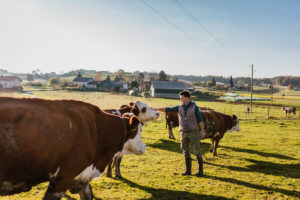
Clinical Mastitis Treatment: Let’s be Selective!
There is a strong association between antimicrobial consumption in livestock with antimicrobial resistance (AMR) in consumers’ and politicians’ mind leading to an incredible societal pressure.
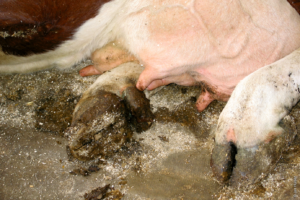
Resting areas: What bedding to recommend for dairy cows?
A cow that is reluctant to lie down will spend less time resting and more time standing, which can cause all sorts of problems. See:
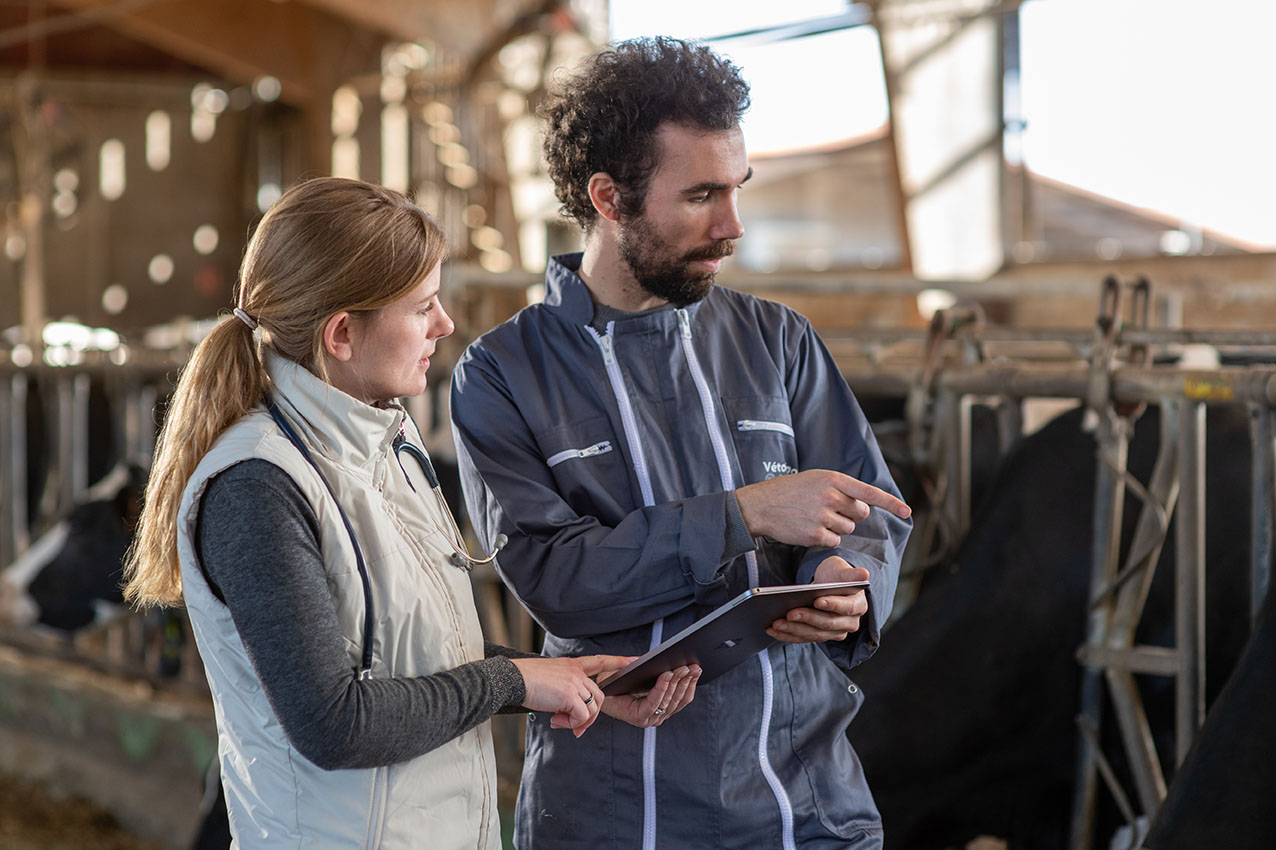
Setting up an effective farm treatment plan for mastitis
For farmers and farm workers treatment plans provide guidance for the right approach to sick cows, for example how to deal with a cow with
Un uso más racional de los antibióticos
Somos selectivos con las vacas que usamos [antibióticos]… así que las vacas que tienen un nivel bajo de mastitis ‘subclínica’, las seleccionamos (por debajo de 200 puntos) y en lugar de los antibióticos, se les aplica el tratamiento de sellado de pezones porque estamos limitando el uso de antibióticos ….
Preguntas frecuentes sobre la gestión de la mastitis
Ganaderos
The three pillars of successful milking [link to blog] are clean and comfortable cows, excellent milking routines and milking equipment in first-rate working order.
The goals are to protect the teat end and to reduce the risk of mastitis pathogens entering the udder.
Healthy, well-functioning teat end and milking machine are essential to keep pathogens out. If the negative pressure is too high, milking gets painful for the cow, leading to poorer milk-out and milk let down, including kicking off the cluster.
Reducing the risk of udder pathogens, either from the environment as from infected udders from other cows, can be achieved by optimising hygiene and a good milking procedure.
Finally, good milking routines ensure that cows are not reluctant to enter the milk parlour and have the shortest milking times. This reduces milking time and makes milking a more pleasant job for the milkers.
Fore milking should be part of every good milking routine, as it is the strongest and most robust stimulus for milk let down (oxytocin release). First, foremilk should be stripped out and teat ends should be perfectly cleaned with a clean or paper towel. As it takes 60 to 90 seconds before the hormone reaches the udder, well-timed attachment of the cluster will induce a good milk flow. The udder will be milked out faster, in a shorter time, reducing the risk of damage to the teat sphincter and of mastitis.
Fore milking or stripping will also allow an early detection of clinical mastitis .
However, fore milking does carry a certain risk for the spread of infections (contagious pathogens) from the one cow to the next. This risk should be managed by hygienic milking procedures: keep your fingers clean, use milkers’ gloves, fore-milking cups, etc.
A farm treatment plan for mastitis will gives you the peace of mind that you treat each clinical mastitis in the optimal way, with the best chance of success.
Ask your vet to set up one for you, and ask for training for yourself and co-workers on the farm.
This depends both on cow status (and her udder) and pathogen involved. If the cow is sick or in pain, she will need treatment and good nursing care. Your vet will probably give anti-inflammatory treatment to reduce the swelling and the inflammatory reaction and to provide pain relief. You can help reduce the swelling by milking out the affected quarter frequently and completely. Ensure that the cow can drink, eat and rest as much as she needs and wants to.
To find out which pathogen cased the mastitis – and if it is still active in the affected quarter – a milk sample should be taken for analysis. Do this before any antibiotic treatment!
If there is a farm treatment plan, follow the treatment set out in the plan. Milk samples should be taken regularly to assess and update the treatment plan.
This depends on a number of factors, including the value of the cow and the risk of cure, age or parity, high SCC and/or clinical mastitis cases history, number of affected quarters, and pathogen involved.
In general: severe clinical mastitis cases should be treated immediately, mild and moderate cases will be treated depending of the pathogen involved. Follow the farm treatment plan if you have one. As for subclinical mastitis, the optimal treatment time is at drying off.
First, it’s important to know how big the problem is, whether it’s localised or dispersed, whether it’s chronic or not, and which group of animals is most affected. A decision diagram can help with a systematic approach [link to diagram high SCC].
A first step is to reduce infection pressure on the farm [link to blog]. Ask your vet to set up an effective farm treatment plan for mastitis and carry out a dynamic (‘wet’) milking assessment to check that the milker and milking machine are working properly. This will also allow the assessment of other factors affecting udder health, such as barn hygiene, nutrition and the general health of the cows. Make sure you set goals and check your progress.
For sure! If you do not record all clinical cases, you have no idea what the real situation is at herd level. Not only will you not be able to take action at herd level, but you will not know the costs involved – including missed milk production.
The same goes on cow level: without recording the clinical cases of mastitis, you do not know if a given cow has had mastitis before, information you need to make optimal decisions on dry cow treatment, treatment of a clinical case and culling.
Taking milk samples for culture and sensitivity will help determine the best treatment for that individual cow. Learn how to take a milk sample correctly.
At farm level, milk sample testing will give you a reliable insight in the mastitis pathogens that play a role on your farm, and help to make decision and focus on the preventive measures. Milk sample testing is also necessary for the vet to help set up a tailor-made farm treatment plan.
Milk sampling is the key to mastitis control. Learning how to take milk samples correctly is important. Take milk samples in case of clinical mastitis, high cell count cows or when setting up a farm treatment plan for mastitis. In case of suspect mastitis, always take a sample prior to treating.
This is a great question! There are a few rules to adhere to:
- The farm treatment plan affix it on the wall or cupboard of the storage area – will determine which medicines you need to have on the farm.
- Keep everything in one, central location, avoid multiplying areas where medicines are kept.
- Make sure the storage area is clean and well lit, allowing a good overview of your stock.
- Apply the ‘first in first out’ rule, and only start a new product once the oldest one is finished. Respect the use-by dates. Put the newer products at the back
- Never open more than one bottle or box of the same product at a time, and write the date of opening on the bottle or package.
- Clean the storage space once a month and dispose of products that are out of date, re-order material such as gloves and test tubes if stocks are low.
Learn how to take milk samples and administer medicines [see tool injections] and udder injectors [see tool].
Bedding materials are a significant source of teat end exposure to mastitis pathogens, as the teat end lies on the bedding when a cow is resting.
Bedding can contain (environmental) mastitis pathogens, such as Streptococcus uberis, E. coli, Klebsiella.
The best way to limit infection pressure from the bedding [blog 10] in free-stall barns is to check, maintain, refresh the stalls 4x per day. Ensure there is a dry layer in the area where the udder lies: remove wet and dirty bedding, add dry bedding if needed and ensure excellent ventilation. Sand is the preferred bedding material. Deep bedding with organic material is next.
To check whether you are doing a good job is by checking the hygiene score [hygiene score] of the udder, flanks and sides of the hind legs.
At drying off, preventive measurements for mastitis are:
- Milk production should be less than 12 litres per day at the time of drying off;
- At drying off, cows should be stressed as little as possible, and should always have free access to fresh water and feed;
- Use antibiotic tubes according to the farm dry cow treatment plan [blog 7B], and/or ask your farm vet for advice for each individual cow;
- Apply a teat sealer to each cow to protect the udder from incoming infections;
Learn how to insert dry cow tubes [how-to chart] in a hygienic manner.
Whatever you do, look after your dry cows!
- check dry cows 3x per day during the first 5 days, and the other dry cows at least 2x per day. First checkpoint is: rumen fill [see rumen fill assessment], which should never be less than 2.5 (a score of 2 is too low!)
- Resting places should be clean and dry at all times [see blog 10]. Clean, refresh and maintain bedding in free stalls at least 2x per day;
Prevent and manage heat stress [see blog 8].
Continue the treatment according to the farm treatment plan. Do not switch to another treatment, unless your vet tells you to do so. If in doubt, call your vet for advice.
In most cases, the mastitis-causing pathogen has disappeared due to the antibiotic treatment. However, the tissue damage and inflammatory reaction take several days to resolve. Only once the udder tissue has healed will the milk look normal again.

